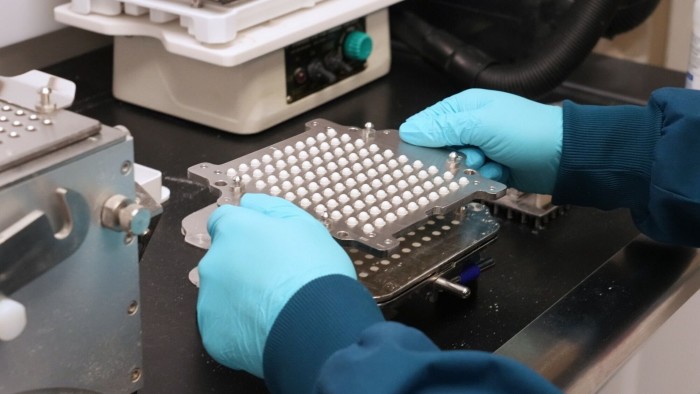Unlock the Editor’s Digest for free
Roula Khalaf, Editor of the FT, selects her favourite stories in this weekly newsletter.
Discovering new drugs is an expensive proposition. From 2012 to 2022, adjusting for inflation, spending on pharmaceutical research and development increased by almost half to roughly $250bn, according to Bernstein Research. Yet the number of novel drug approvals remained broadly flat. Artificial intelligence could help.
Birthing a new treatment is fraught with challenges. Looking into hospital-acquired bacterial pneumonia in a 1,000 patient Phase 3 trial cost just shy of $90,000 per patient, according to research by Tufts and Duke universities. Insufficient guinea pigs are another problem; in one study, more than two-thirds of UK trials failed to enrol sufficient candidates.
Jack Scannell and fellow researchers, writing over a decade ago, dubbed this Eroom’s Law. This is the backwards version of Moore’s Law, which predicts that the number of transistors that can be squeezed on to a microchip doubles every two years. The number of new drugs per $1bn spent on R&D has halved about every nine years since 1950. Trials from Phase 1 to launch still take a decade on average, calculates McKinsey, and even then only one in 10 succeeds.
Contract research organisations, which undertake these trials for drug companies and the like, are banking on AI to help improve these odds. IQVIA, the biggest with a market value of $32bn, is deploying Nvidia agentic AI systems in several processes. In one case, it reckons this cuts the data reviewing from seven weeks to just a fortnight. Medidata, owned by Dassault Systèmes, and Flatiron, owned by Roche, both license software to organisations that carry out research.
Big drugmakers are in on the act too. Genentech, part of Switzerland’s Roche, calls its strategy of feeding data derived from experiments into AI models “lab in a loop”. The models produce disease predictions and treatments, subsequently tested by human scientists.
Since AI looks like a natural bedfellow for trials, expect more to follow. Pharma groups have huge amounts of data and a lot of grunt work is involved in the various processes, from workflow through to analytics. Technology can crunch through in a fraction of the time. Generative AI meantime can create synthetic datasets for simulations.
A couple of caveats attach. One sticking point is that regulations and ethics covering the field have yet to catch up with what’s theoretically possible. The other is that clinical research companies have not been performing well, owing to the rising costs of running clinical trials and the commoditisation of some technologies. They will be hoping AI improves not only the trials, but their margins too.
The dream would be to eradicate — or even reverse — Eroom’s Law. For now it is still a dream. But if any industry is accustomed to trial and error, it’s this one.
[email protected]

